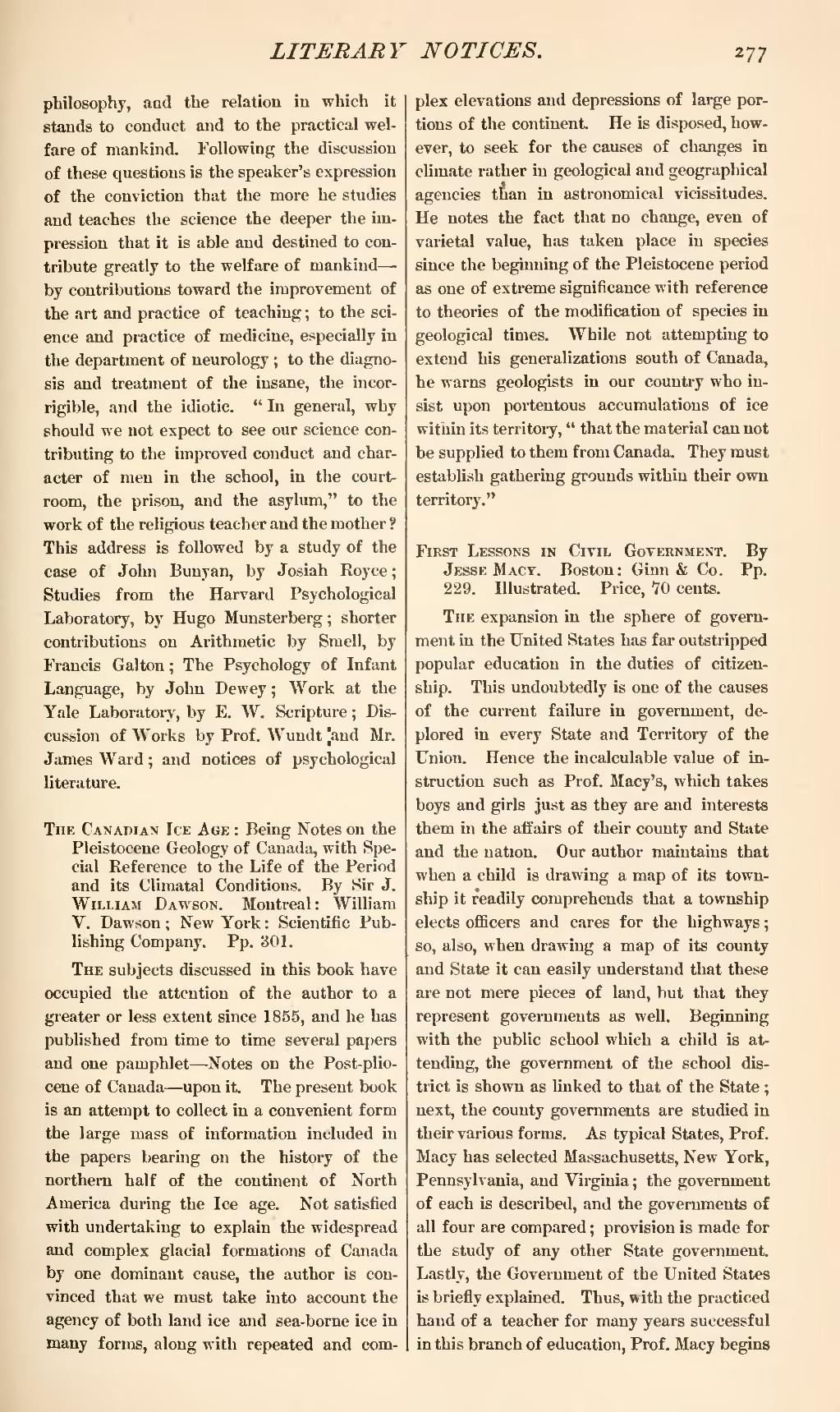philosophy, and the relation in which it stands to conduct and to the practical welfare of mankind. Following the discussion of these questions is the speaker's expression of the conviction that the more he studies and teaches the science the deeper the impression that it is able and destined to contribute greatly to the welfare of mankind—by contributions toward the improvement of the art and practice of teaching; to the science and practice of medicine, especially in the department of neurology; to the diagnosis and treatment of the insane, the incorrigible, and the idiotic. "In general, why should we not expect to see our science contributing to the improved conduct and character of men in the school, in the courtroom, the prison, and the asylum," to the work of the religious teacher and the mother? This address is followed by a study of the case of John Bunyan, by Josiah Royce; Studies from the Harvard Psychological Laboratory, by Hugo Munsterberg; shorter contributions on Arithmetic by Smell, by Francis Galton; The Psychology of Infant Language, by John Dewey; Work at the Yale Laboratory, by E. W. Scripture; Discussion of Works by Prof. Wundt and Mr. James Ward; and notices of psychological literature.
The Canadian Ice Age: Being Notes on the Pleistocene Geology of Canada, with Special Reference to the Life of the Period and its Climatal Conditions. By Sir J. William Dawson. Montreal: William V. Dawson; New York: Scientific Publishing Company. Pp. 801.
The subjects discussed in this book have occupied the attention of the author to a greater or less extent since 1855, and he has published from time to time several papers and one pamphlet—Notes on the Post-pliocene of Canada—upon it. The present book is an attempt to collect in a convenient form the large mass of information included in the papers bearing on the histpry of the northern half of the continent of North America during the Ice age. Not satisfied with undertaking to explain the widespread and complex glacial formations of Canada by one dominant cause, the author is convinced that we must take into account the agency of both land ice and sea-borne ice in many forms, along with repeated and complex elevations and depressions of large portions of the continent. He is disposed, however, to seek for the causes of changes in climate rather in geological and geographical agencies than in astronomical vicissitudes. He notes the fact that no change, even of varietal value, has taken place in species since the beginning of the Pleistocene period as one of extreme significance with reference to theories of the modification of species in geological times. While not attempting to extend his generalizations south of Canada, he warns geologists in our country who insist upon portentous accumulations of ice within its territory, "that the material can not be supplied to them from Canada. They must establish gathering grounds within their own territory."
First Lessons in Civil Government. By Jesse Macy. Boston: Ginn & Co. Pp. 229. Illustrated. Price, 70 cents.
The expansion in the sphere of government in the United States has far outstripped popular education in the duties of citizenship. This undoubtedly is one of the causes of the current failure in government, deplored in every State and Territory of the Union. Hence the incalculable value of instruction such as Prof. Macy's, which takes boys and girls just as they are and interests them in the affairs of their county and State and the nation. Our author maintains that when a child is drawing a map of its township it readily comprehends that a township elects officers and cares for the highways; so, also, when drawing a map of its county and State it can easily understand that these are not mere pieces of land, but that they represent governments as well. Beginning with the public school which a child is attending, the government of the school district is shown as linked to that of the State; next, the county governments are studied in their various forms. As typical States, Prof. Macy has selected Massachusetts, New York, Pennsylvania, and Virginia; the government of each is described, and the governments of all four are compared; provision is made for the study of any other State government. Lastly, the Government of the United States is briefly explained. Thus, with the practiced hand of a teacher for many years successful in this branch of education, Prof. Macy begins
